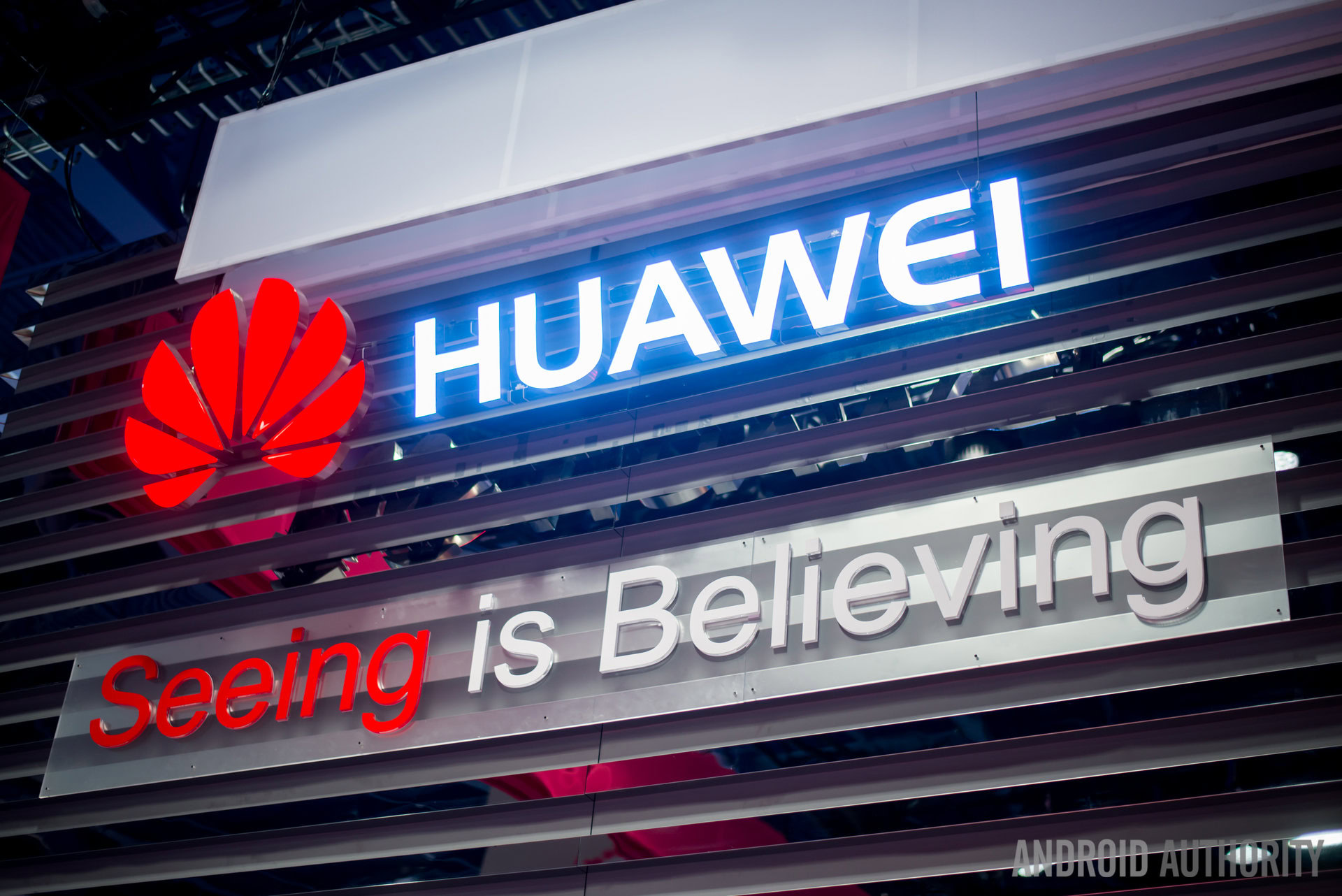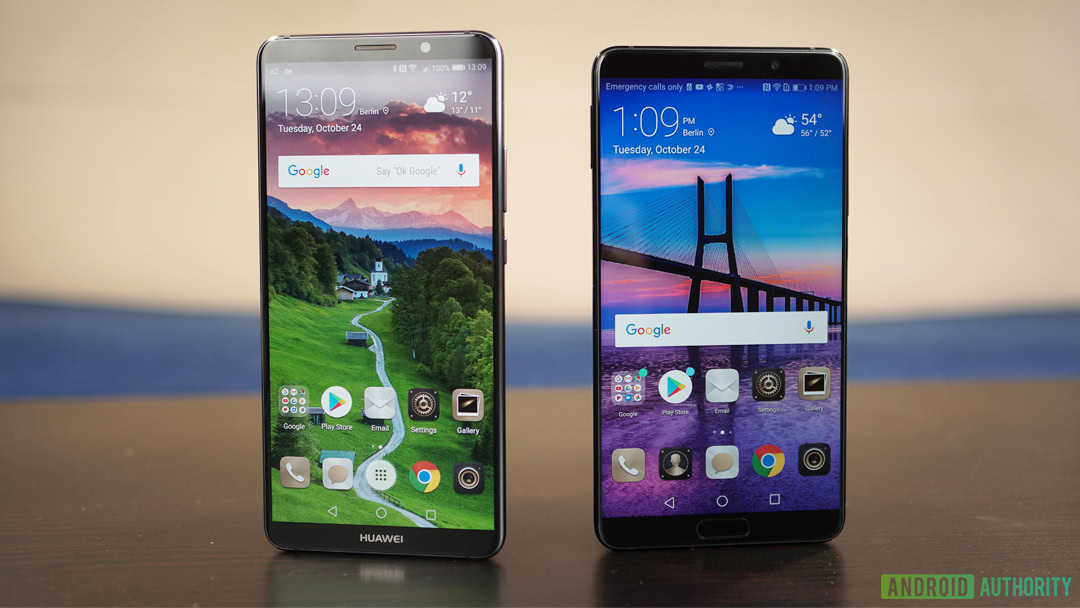Affiliate links on Android Authority may earn us a commission. Learn more.
HUAWEI in 2018: Can’t stop, won’t stop

If the mobile industry were an ocean, Huawei would definitely be a great white shark. The Chinese giant moves fast, strikes hard, and can smell blood from miles away.
But, just like the shark, HUAWEI cannot stop moving. Ever. If it does, it drowns. The competition is just that fierce.
In 2017, HUAWEI encroached on the hunting grounds of Samsung and Apple. For a brief time, it even beat Apple to became the second largest phone maker in the world. The big target for 2018 was the U.S., but the murky waters of geopolitics proved too hard to navigate. Does that mean that the company is dead in the water? Not by a long shot.
Up and coming
HUAWEI is no longer an exotic name for consumers. Over the past five years, the company broke out of its home market in China and established itself as a top manufacturer around the world. There’s only a handful of major markets where the company doesn’t have a strong presence, of which the U.S. is the most important.
HUAWEI grew by all measures in 2017. It gained market share, culminating over the summer, when it sold more phones than Apple for the first time. Thanks to heavy marketing spending, HUAWEI cemented its brand, both in developing markets and throughout the West. The company shipped a record 153 million smartphones in 2017, though actual revenue growth slowed down.
HUAWEI grew by all measures in 2017.
The company also upped its product game, releasing the powerful Mate 10 Pro, which Android Authority crowned Phone of the Year in our Best of Android 2017 comparison. At the lower end of the market, phones from its HONOR brand raked in sales and gave the company a strong presence in fast-growing markets in Asia and Africa.
Huawei’s decades-long investment in R&D also paid off in 2017. The best example is the company’s Kirin line of processors, which is competitive with Qualcomm and Samsung, and in some ways a step ahead. The Kirin 970 SoC, powering the Mate 10 Pro, features AI functionality Samsung is only expected to match by the second part of 2018. Also, HUAWEI looks to have a lot to gain as the world moves towards wide 5G adoption in 2019-2021, thanks to its strong contributions to the 5G standard.
Richard Yu announcing that the Mate 10 Pro is coming to the US. #CES2018 pic.twitter.com/F2Gg9nXNnl— Android Authority (@AndroidAuth) January 9, 2018
Entry denied
CES 2018 was supposed to be a shining achievement for Richard Yu. After years of preparations, the enthusiastic CEO of HUAWEI’s mobile group was all set to announce the company’s grand entrance into the U.S. through a partnership with AT&T. Then politics reared its ugly head and AT&T walked away from the deal. Yu found himself onstage in Las Vegas struggling to explain what happened.
It was the most memorable moment of CES. Without help from a teleprompter, Yu admitted the cancelled AT&T deal was a big loss for HUAWEI, but said that American consumers will suffer more, because they don’t have the best choice in smartphones.
“We’ve proved our quality, we’ve proved our privacy and security protection,” said Yu, addressing the reputation that has dogged HUAWEI for years.
CES 2018 was supposed to be a shining achievement for Richard Yu.
Further bad news came after CES: U.S. lawmakers pressured carriers to stop working with HUAWEI in any capacity, effectively shutting off the company from the market. Just a week ago, Bloomberg reported Verizon has also walked away from a deal with HUAWEI due to political pressure.
Why U.S. carriers won’t sell the best phone in the world is complicated. Whatever the reason, it’s clear HUAWEI won’t be able to make it in the U.S. market, which is effectively controlled by carriers. In 2018, HUAWEI will need to find sources of growth elsewhere, mainly in Europe and other markets. “We have no other options,” a company executive told The Information.
Enemy at the gates
Despite the setback in the U.S., HUAWEI can remain competitive globally. The U.S. is the world’s biggest market for premium phones, but the developing world is where all the real growth is happening. HUAWEI isn’t hampered by any political nonsense there.
The company is very active in fast-growing markets, but so is everyone else. That includes Samsung and Apple, but HUAWEI’s probably more worried about Chinese rivals like OPPO, vivo, and Xiaomi.
OPPO and vivo are the biggest threat.
OPPO and vivo — sister companies owned by the BBK Corporation — are the biggest threat to HUAWEI in 2018. Their combined market share is bigger than HUAWEI’s and even Apple’s. OPPO and vivo are very strong in China in particular, but also in India and other countries in Asia. HUAWEI will have to fight them at all price points, and it will get messy.
A resurgent Xiaomi could also spell trouble for HUAWEI, which has copied Xiaomi’s playbook with its HONOR sub-brand. Long confined to online sales, Xiaomi has expanded its physical retail network in the past year, gaining market share at an accelerated pace.
Add everyone else to the fray — including, worryingly, Google — and it’s easy to see why HUAWEI can’t afford to rest even for a second.

Let the products do the talking
The mobile market has never been more crowded and competitive, but HUAWEI is used to the pressure. Its products went from the bargain bin to the top shelf in five short years, on the strength of their quality, features, and price. Nothing about that will change in 2018, with phones like the P20 and Mate 20, as well as the new HONOR lineup, set to hit the market.
HUAWEI will double down on the markets where it can operate, using some of the funds it would’ve invested in the United States. The company had earmarked $100 million for the cancelled AT&T launch alone — all that money will be redeployed to Europe and Asia, ratcheting up pressure on rivals.
The mobile market has never been more crowded and competitive, but HUAWEI is used to the pressure.
It will be interesting to see which side HUAWEI picks in the looming Google vs Amazon war. Google seems the logical choice, but HUAWEI has already hedged its bets by putting Alexa on some of its devices. Plus, Amazon doesn’t compete with HUAWEI on phones, unlike Google. With Google Assistant and Amazon Alexa shaping up to be the big platforms of the next computing era, HUAWEI will want to be on the winner’s side.
Wrapping up
The great white shark has remained unchanged over millions of years of evolution. HUAWEI doesn’t have that luxury. In 2018, the Chinese giant needs to change itself and rise to the huge challenges — and opportunities — that lie ahead
It’s clear, more than ever, that HUAWEI is serious about becoming the world’s top smartphone company. That won’t happen in 2018, but HUAWEI has a good shot at beating Apple and becoming #2 worldwide. The open hostility of the U.S. government is a major setback, but the silver lining is HUAWEI will be that much more motivated to become the biggest player everywhere else. And that will make it much harder for the United States to keep HUAWEI out.